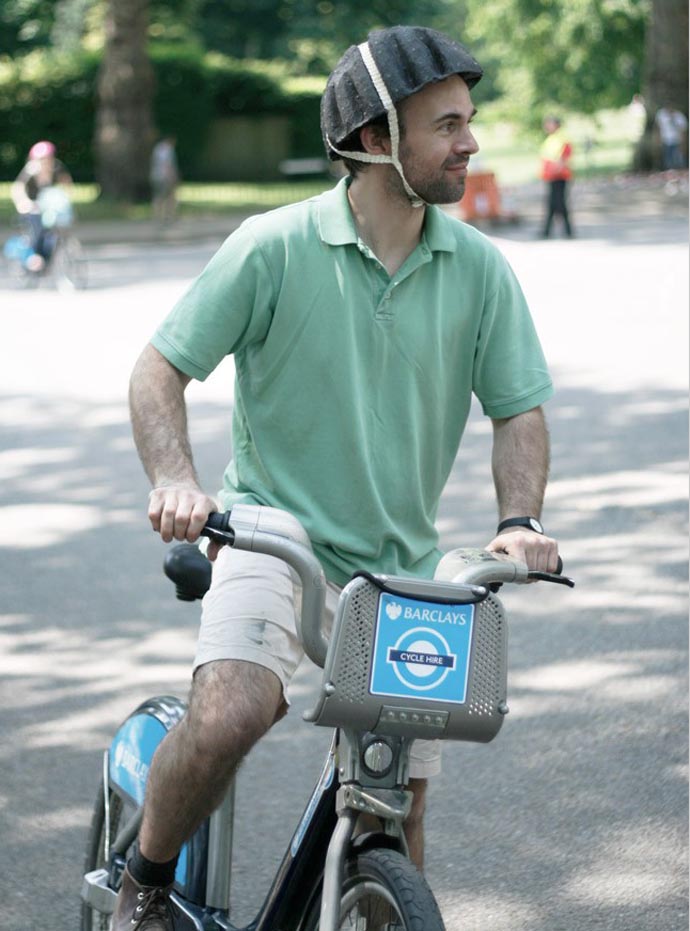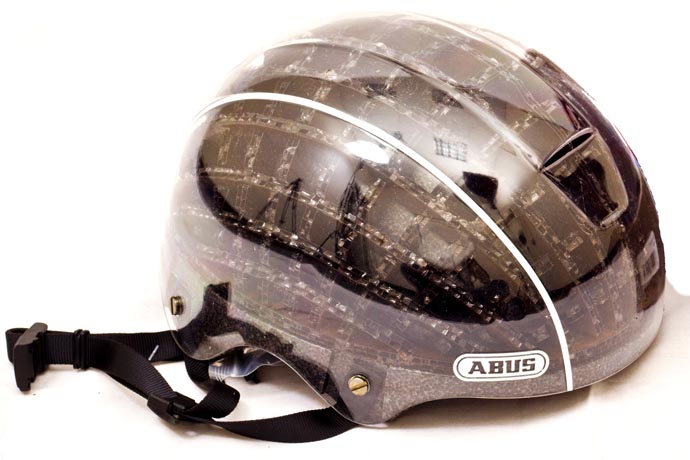No word on how much protection it offers, but a new design of low-cost, recyclable, bicycle helmet manufactured from waste paper pulp is an imaginative use for the discarded newspapers that litter the London transport network.

Under the proposal, the many tons of newspapers, in particular the freebies such as the Standard and Metro, would be collected and blended with water to create a pulp.
No bleaching or adhesive is added during the production process, although an organic and food-safe additive is combined to ensure the helmets remain water resistant for up to 6 hours in rain. Natural pigments to communicate helmet size is also added.
The creators of the pulp helmet, Bobby Petersen,Tom Gottelier and Edward Thomas intend the design to be dispensed alongside the Boris Bike docking stations, used for short periods of time and then disposed of. The helmet and strap are fully recyclable and can be re-pulped into a new helmet without any degradation of the material. Even the ink used to print the helmet’s size is a natural pigment.
Cardboard cycle helmets
The arrival of the paper pulp helmet follows the development of a cardboard cycle helmet which is claimed to be stronger and more durable than those based on a polystyrene construction.

Best known in this country as a manufacturer of cycle locks, Abus worked with the inventor of the Kranium cardboard cycle helmet to market the Abus Kranium AKS1 Limited Edition.
Royal College of Art postgraduate Anirudha Surabhi developed the lightweight and waterproof Kranium cardboard cycle helmet following a tumble from his bike.
His original concept was inspired by the physiology of the woodpecker. The bird has a corrugated cartilage structure separating beak and skull, which allows its head to withstand repeated knocks. Surabhi used the same principle to develop a honeycomb cardboard structure called Dual Density Honeycomb Board.
The resulting cycle helmet is stronger than the commonly-used polystyrene and plastic construction and able to withstand multiple shocks. Conventional cycle helmets need to be thrown away if they sustain a blow.
The design boasts a see-through shell that reveals the honeycomb cardboard structure beneath. Whether or not you are a fan of protective headgear, there’s no denying this is an interesting and fine-looking cycle helmet.
Previous cycling-related designs from RCA students include a cycle storage hoist that puts bikes out of the reach of thieves.
Use your head – protect your bike
Cycle insurance from the ETA includes new-for-old, cover for accidental damage, third party insurance, personal accident cover and if you breakdown, we will even come out and recover you and your bike. Covers electric bicycles, too. From 40p per week.
0 Comments View now